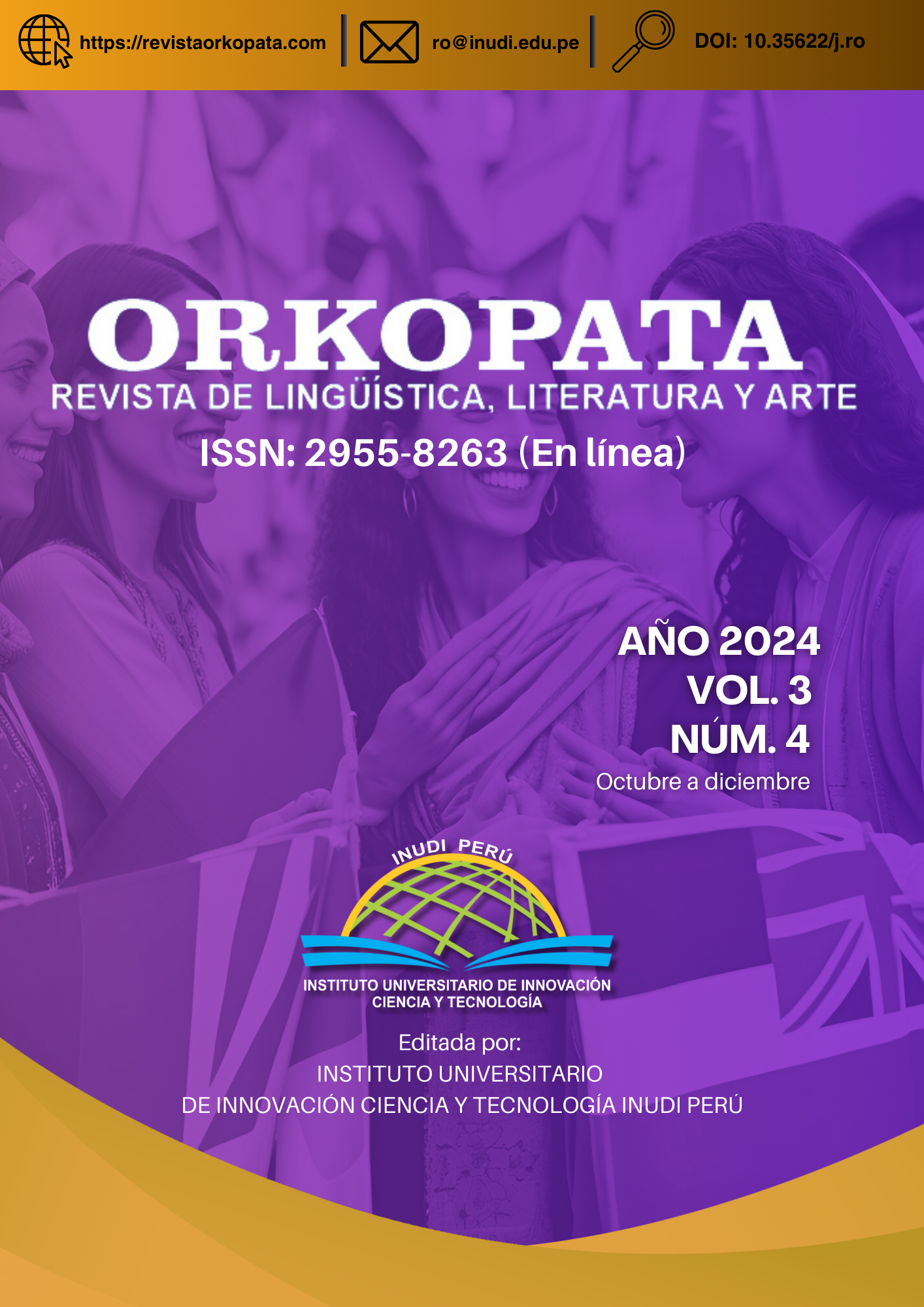Cognitivist analysis of the resultative semantics of phrasal verbs with chu (出 'out') in Chinese
DOI:
https://doi.org/10.35622/j.ro.2024.04.001Keywords:
comparative linguistics, grammar, linguistic analysis, semantics, south and southeast Asian languagesAbstract
Being a satellite frame language, Chinese abounds in [verb + directional particle] constructions (V+DP). Semantically, V+DP expresses literal movement and resultative aspect, indicating the culmination of the event. When denoting resultative aspect, the amalgamation of the verb and the DP corresponds to the linguistic phenomenon of the phrasal verb (PV). The lexical meaning carried by a specific DP endows the resultative PV with unique meanings. This paper analyzes the semantic behavior of the resultative PV formed with chu (出 ‘out’), one of the most frequent DPs, from a cognitive approach. By analyzing data extracted from the BCC Corpus (BLCU Corpus Center), we have observed certain significant patterns. The results have shown that the semantic behavior of the resultative PV with chu (出 ‘out’) is suitable for representing the concept of ‘visibility’, motivated by the container image schema. This concept acts, first, as a source domain for figurative meanings such as ‘understand’. Secondly, it reflects in various specific interpretations linked to container metaphors. Therefore, it is concluded that the cognitive analysis allows us to distinguish the PV with chu (出 ‘out’) from the V+chu (出 ‘out’) grammatical constructions, establishing it as a consolidated lexical unit. This study provides a deeper understanding of the PV with chu (出 ‘out’) in Chinese and suggests future research in intercultural comparison and pedagogical applications in teaching Chinese as a foreign language.
References
Bolinger, D. (1971). The phrasal verb in English. Harvard University Press.
Corpas Pastor, G. (1996). Manual de fraseología española. Gredos.
Dai, Y. [戴耀晶] (1997). Xiandai hanyu shiti xitong yanjiu 现代汉语时体系统研究 [Un estudio del sistema aspectual del chino moderno]. Zhejiang jiayu chubanshe浙江教育出版社.
Goldberg, A. E. (1995). Constructions: A construction grammar approach to argument structure. University of Chicago Press.
Guo, S. [郭珊珊], & Zhu, L. [朱乐红] (2011). Lun hanyu chu lei quxiang buyu de yufa yiyi 论汉语“出”类趋向补语的语法意义[“El significado gramatical del complemento direccional chu en chino”]. Hunan keji daxue xuebao (shehui kexue ban) [湖南科技大学学报(社会科学版)], 14(3), 89-93.
Johnson, M. (1987). The body in the mind: The bodily basis of meaning, reason, and imagination. University of Chicago Press. DOI: https://doi.org/10.7208/chicago/9780226177847.001.0001
Kövecses, Z. (2000). Metaphor and emotion: Language, culture, and body in human feeling. Cambridge University Press.
Lakoff, G., & Johnson, M. (1980). Metaphors we live by. University of Chicago Press.
Langacker, R. W. (1987). Foundations of cognitive grammar, Vol. 1: Theoretical prerequisites. Stanford University Press.
Langacker, R. W. (1991). Foundations of cognitive grammar, Vol. 2: Descriptive application. Stanford University Press.
Levin, B., & Rappaport, H. (1995). Unaccusativity: At the syntax-lexical semantics interface. MIT Press.
Liu, Y. 刘月华 (1998). Quxiang buyu tongshi 趋向补语通释 [Explicación general de los complementos direccionales]. Beijing yuyan wenhua chubanshe北京语言文化出版社.
Morgan, P. S. (1997). Figuring out figure out: Metaphor and the semantics of the English verb-particle construction. Cognitive Linguistics, 8(4), 327-358. https://doi.org/10.1515/cogl.1997.8.4.327 DOI: https://doi.org/10.1515/cogl.1997.8.4.327
Porto Requejo, M. D., & Pena Díaz, C. (2008). A cognitive approach to some phrasal verbs in English for specific purpose. Ibérica, 16, 109-128.
San Roque, L., Kendrick, K. H., Norcliffe, E., & Majid, A. (2018). Universal meaning extensions of perception verbs are grounded in interaction. Cognitive Linguistics, 29(3), 371-406. https://doi.org/10.1515/cog-2017-0034 DOI: https://doi.org/10.1515/cog-2017-0034
Soriano, C. (2012). La metáfora conceptual. In I. Ibarretxe-Antuñano & J. Valenzuela (Eds.), Lingüística cognitiva (pp. 97-121). Antropos.
Talmy, L. (2000). Toward a cognitive semantics, Vol. 2: Typology and process in concept structuring. MIT Press. DOI: https://doi.org/10.7551/mitpress/6848.001.0001
Viberg, Å. (1983). The verbs of perception: A typological study. Linguistics, 21(1), 123-162. https://doi.org/10.1515/ling.1983.21.1.123 DOI: https://doi.org/10.1515/ling.1983.21.1.123
Wang, Y. & Álvarez, A. (2024). Aproximación construccionista a la semántica resultativa de la construcción V+shang (上‘arriba’) en chino. Orkopata. Revista De Lingüística, Literatura Y Arte, 3(3), 7-28. https://doi.org/10.35622/j.ro.2024.03.001 DOI: https://doi.org/10.35622/j.ro.2024.03.001
Wang, Y. (2023). Estudio del verbo sintagmático en español y en chino [Tesis doctoral, Universidad de Granada]. https://hdl.handle.net/10481/89678
Zhou, H. [周红] (2019). Hanyu dongqushi de renzhi yuyi yanjiu 汉语动趋式的认知语义研究 [Estudio cognitivo de la semántica de las construcciones direccionales en chino]. Renmin chubanshe人民出版社.
Downloads
Published
Issue
Section
License
Copyright (c) 2024 Yuan Wang (Autor/a)

This work is licensed under a Creative Commons Attribution 4.0 International License.













